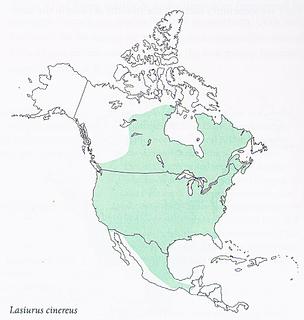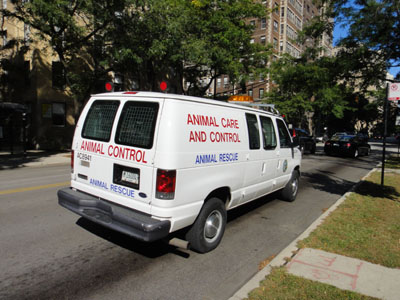It was hard to get going yesterday morning. These early autumn days seem more like mid-November than late September. But I was up by 7am, hammering away at the keyboard with the aid of some very strong black coffee, when I heard this god-awful screeching outside of my window.
I tried to ignore it at first, but it just intensified. Then I realized that this was some animal in serious distress. An utterly terrified, life-or-death type of distress. So I went to the window to investigate.
Three crows had surrounded a shrieking animal in the empty lot adjacent to my building and were taking their turns pecking and tearing away at it. I couldn’t tell exactly what it was, but it sure was “down for the count.”
Three against one? That’s hardly fair. So I decided to go out there and see what all the fuss was about…
I approached the crime scene and shooed away the trio of surprisingly large and menacing crows. They scattered away as I advanced, but they hovered closely in the nearby trees, cackling indignantly and fixing me with their baleful stares.
I wasn’t quite prepared for what I saw:
Hoary bats (Lasiurus cinereus) are the most widespread bat species in the Americas. Their habitat includes most of North America from north-central Canada and extends south all the way to Central America.
Hoary bats are solitary forest dwellers that prefer evergreen trees to deciduous environments. They are nocturnal hunters who feed on insects during the evening and spend their days roosting in a torpor high above the ground. This explains why hoary bats – although quite abundant and widespread – rarely come into contact with humans.
So how did this one end up as midday crow fodder?
There are several possibilities. First, many hoary bats migrate long distances in the fall, spending the winter in the warmer regions of sub-tropical or tropical America. Apparently, it’s not that unusual for these bats to become quite exhausted from flying and fall out of their roosts onto the ground. And even if they manage to stay in the trees during the day, they are quite easily exposed to predation. This is especially the case with juveniles or young adults. And give the smaller size of this hoary bat (3-4 inches), I suspect he is still technically a “minor.”
So it’s quite likely that our little hero was unfortunately literally caught napping by some very hungry crows who frequent that empty lot.
The second possibility, while very remote, is a bit less innocent. In general, bats are not dangerous. But like any other mammal, they can carry rabies. And even though less than 1% of all bats are infected with the virus, hoary bats tend to have a higher incidence of the disease given that they sometimes prey on other bats.
So whatever happened to the bat, you might ask?
Well, I couldn’t just let him get torn apart by the crows. So I placed him in a box using some heavy winter gloves. He had calmed down considerably at that point, but I could tell that he was still in pretty bad shape. His left wing was somewhat misshapen, and from the look of things he had taken a number of very unkind jabs to the midsection from the three crows.
The little fellow slept very soundly for all of yesterday afternoon and was still in a tranquil slumber when I returned home in the early evening. He had even climbed up onto a bamboo lid I had placed in his temporary home and was roosting upside down on one leg.
Unfortunately, he didn’t make it though the night. He passed quietly in his sleep and – from the look of things – quite peacefully.
I contacted animal control this morning, and they came to take him away. The animal control officer had never seen a hoary bat, so I explained to her what it was. We both commented on how rare and unique it was to see such an animal.
But apparently they’re quite common. And as you walk underneath the trees this time of year, they’re probably right above you.
Quietly sleeping, on their way south.




Wow! What a story! It was very nice of you to care for the bat. I am sorry to hear he didn’t make it. 🙁
I’ll have to pay more attention to the trees…..
Very very interesting. I’m always amazed at the wildlife just outside ( and inside to in every home if you know where to look).